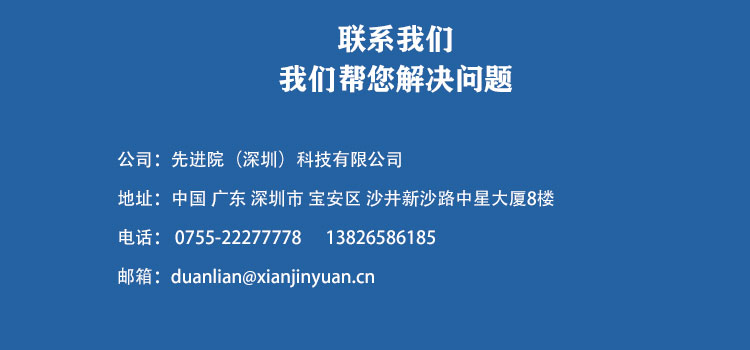1、 Introduction
The demand for electromagnetic compatibility and stealth technology is increasing in the fields of modern electronics and communication,
Absorbing materialRadar Absorbing Materials (RAM), as one of the key materials, have been widely studied and applied. However, low permeability absorbing materials often face the problem of enhanced electromagnetic wave reflection in practical applications, which seriously affects their absorbing performance. This article will explore the causes of low permeability absorbing materials in enhancing electromagnetic wave reflection, and propose corresponding solutions and technical means.
2、 Characteristics and reflection enhancement of low permeability absorbing materials
(1) Characteristics of low permeability absorbing materials
Low permeability absorbing materials typically have lower magnetic permeability (μ), which means that they produce less magnetic loss under the action of electromagnetic waves. This type of material mainly includes some dielectric loss materials, such as silicon carbide (SiC), graphene, carbon nanotubes, etc. These materials mainly absorb electromagnetic waves through the dielectric loss mechanism, which converts electromagnetic wave energy into thermal energy through the polarization process inside the material.
(2) The cause of reflection enhancement problem
-
Impedance mismatch
-
When electromagnetic waves propagate at a medium interface, if the electromagnetic impedance on both sides of the interface does not match, reflection will occur.
Low permeability absorbing materialDue to its low magnetic permeability, there is a significant difference in electromagnetic impedance between it and air (free space), resulting in enhanced reflection of electromagnetic waves on the material surface. For example, when electromagnetic waves enter low permeability absorbing materials from air, due to the material's much higher electromagnetic impedance than air, most of the electromagnetic waves will be reflected back into the air, and only a small amount of electromagnetic waves can enter the interior of the material and be absorbed.
-
Uneven material structure
-
The uneven microstructure inside absorbing materials, such as inconsistent particle size and uneven porosity distribution, can lead to multiple scattering and reflection of electromagnetic waves when propagating inside the material. These scattered and reflected electromagnetic waves superimpose on the surface of the material, further enhancing the reflected signal. For example, in some porous absorbing materials, the uneven size and distribution of pores can cause electromagnetic waves to reflect multiple times between the pores, ultimately forming strong reflection signals on the surface of the material.
-
The Influence of Electromagnetic Wave Incident Angle
-
When electromagnetic waves are incident on the surface of absorbing materials at non perpendicular angles, the problem of reflection enhancement becomes more significant. This is because the reflection and refraction behavior of non perpendicular incident electromagnetic waves on material surfaces is more complex, and the electromagnetic impedance characteristics of materials also change at different incident angles. For example, in the case of oblique incidence, the reflection coefficient of electromagnetic waves increases with the increase of incidence angle, resulting in enhanced reflection.

3、 Technical means to overcome the problem of reflection enhancement
(1) Impedance matching design
-
Gradient structure design
-
By designing gradient structured absorbing materials, the electromagnetic impedance characteristics of the material surface can be effectively improved. Gradient structure refers to the gradient variation of electromagnetic parameters (such as dielectric constant and magnetic permeability) of materials in the thickness direction. For example, it is possible to
Low permeability absorbing materialDesigned as a multi-layer structure, the dielectric constant of each layer gradually increases, allowing electromagnetic waves to gradually adapt to the material's electromagnetic impedance and reduce reflection when entering the material. Research has shown that gradient structured absorbing materials have better absorption performance in a wide frequency band, effectively alleviating the problem of reflection enhancement.
-
Introduction of impedance matching layer
-
Introducing an impedance matching layer on the surface of low permeability absorbing materials can effectively improve the electromagnetic impedance matching between the material and air. The impedance matching layer is usually made of materials with dielectric constant and magnetic permeability between air and absorbing materials. For example, a thin layer of silicone rubber composite material can be used as the impedance matching layer, and its dielectric constant and magnetic permeability can be controlled by adjusting the type and content of fillers. By designing the thickness and electromagnetic parameters of the impedance matching layer reasonably, electromagnetic waves can pass through the impedance matching layer before entering the absorbing material, reducing reflection.
(2) Material structure optimization
-
Nanostructured design
-
The use of nanostructured absorbing materials can effectively improve the electromagnetic properties of materials and reduce reflection enhancement issues. Nanostructured materials have high specific surface area and special electromagnetic response characteristics, which can enhance the absorption and scattering of electromagnetic waves. For example, nanoporous carbon materials have rich pore structures and high specific surface areas, and electromagnetic waves are reflected and scattered multiple times in the pores before being absorbed by the material. In addition, the dielectric constant and magnetic permeability of nanostructured materials can be optimized through nanoscale regulation, thereby improving the electromagnetic impedance matching characteristics of the materials.
-
Porous structure design
-
Designing porous absorbing materials can effectively reduce the reflection of electromagnetic waves. The pores inside porous structural materials can increase the propagation path of electromagnetic waves, causing multiple reflections and scattering of electromagnetic waves in the pores, thereby enhancing absorption. For example, porous materials such as foam metal or foam ceramics have good wave absorbing properties, and their porosity and pore size can be controlled by the preparation process. By optimizing the porosity and pore size distribution of porous structures, the problem of electromagnetic wave reflection enhancement can be effectively reduced, and the absorbing performance of materials can be improved.

(3) Optimization of Electromagnetic Wave Incident Angle
-
Angle dependent design
-
By designing angle dependent absorbing materials, the absorption performance of the material can be effectively improved at different incident angles. For example, materials with anisotropic electromagnetic properties can be used, whose electromagnetic parameters have different values in different directions. This material can better match the propagation characteristics of electromagnetic waves and reduce reflection at different incident angles. Research has shown that absorbing materials with anisotropic structures exhibit good absorption performance over a wide angle range, effectively alleviating the problem of reflection enhancement.
-
Multi angle composite structure design
-
Designing absorbing materials with multi angle composite structures can effectively improve the electromagnetic properties of materials at different incident angles. For example, absorbing material units optimized at different angles can be combined into a composite structure to achieve effective absorption of electromagnetic waves at different incident angles. This composite structure can take the form of layered structure, honeycomb structure, or pyramid structure. By designing the electromagnetic parameters and structural dimensions of each unit reasonably, it can absorb wide-angle electromagnetic waves and reduce reflection enhancement problems.
4、 Experimental and Application Cases
(1) Experimental research
-
Preparation and Testing of Gradient Structure Absorbing Materials
-
In the experiment, a multi-layer gradient structure design was used
Low permeability absorbing materialBy adjusting the dielectric constant and magnetic permeability of the material layer by layer, samples with gradient structures are prepared. The test results show that the gradient structured absorbing material has low reflectivity in a wide frequency band, effectively alleviating the problem of reflection enhancement. For example, in the X-band (8-12 GHz), the bandwidth where the reflectivity of gradient structured samples is less than -10 dB increases by about 30% compared to non gradient structured samples.
-
Study on the absorption properties of nanoporous carbon materials
-
Nano porous carbon materials were prepared and their absorbing properties were tested. The results indicate that nanoporous carbon materials have good absorbing properties, and their pore structure can effectively reduce the reflection of electromagnetic waves. For example, in the Ku band (12-18 GHz), the reflectivity of nanoporous carbon materials is less than -15 dB, and they exhibit good absorption performance at different incident angles, effectively improving the problem of reflection enhancement.

The above data is for reference only, and specific performance may vary due to production processes and product specifications.







